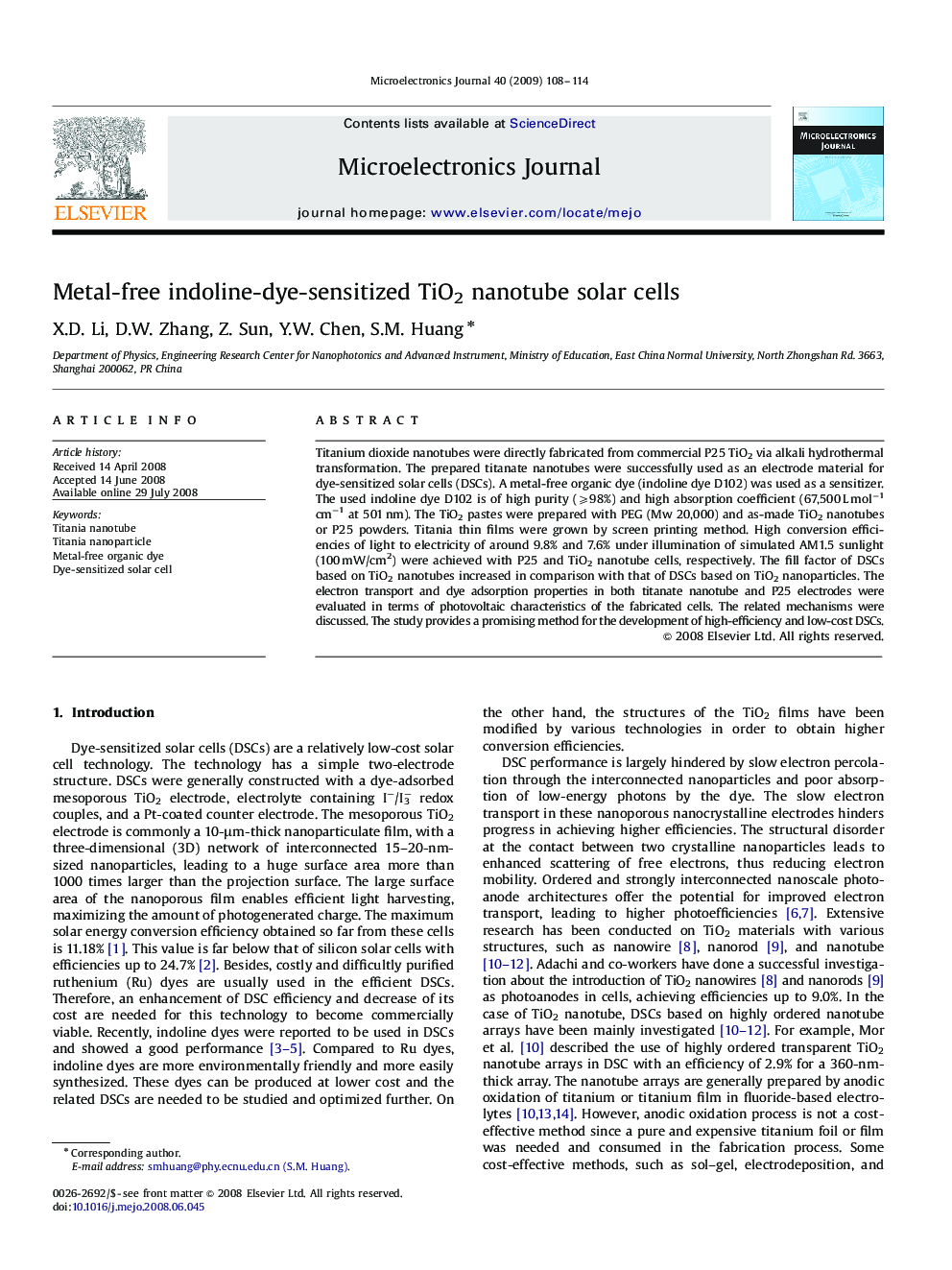| Article ID | Journal | Published Year | Pages | File Type |
|---|---|---|---|---|
| 547865 | Microelectronics Journal | 2009 | 7 Pages |
Titanium dioxide nanotubes were directly fabricated from commercial P25 TiO2 via alkali hydrothermal transformation. The prepared titanate nanotubes were successfully used as an electrode material for dye-sensitized solar cells (DSCs). A metal-free organic dye (indoline dye D102) was used as a sensitizer. The used indoline dye D102 is of high purity (⩾98%) and high absorption coefficient (67,500 L mol−1 cm−1 at 501 nm). The TiO2 pastes were prepared with PEG (Mw 20,000) and as-made TiO2 nanotubes or P25 powders. Titania thin films were grown by screen printing method. High conversion efficiencies of light to electricity of around 9.8% and 7.6% under illumination of simulated AM1.5 sunlight (100 mW/cm2) were achieved with P25 and TiO2 nanotube cells, respectively. The fill factor of DSCs based on TiO2 nanotubes increased in comparison with that of DSCs based on TiO2 nanoparticles. The electron transport and dye adsorption properties in both titanate nanotube and P25 electrodes were evaluated in terms of photovoltaic characteristics of the fabricated cells. The related mechanisms were discussed. The study provides a promising method for the development of high-efficiency and low-cost DSCs.
